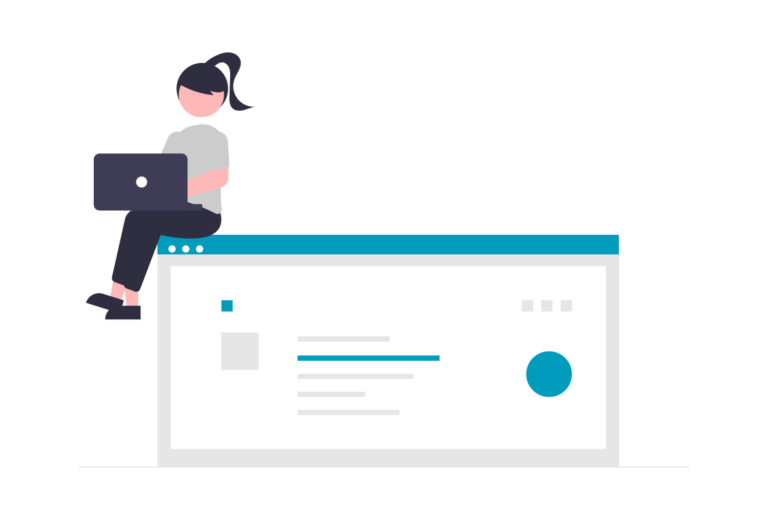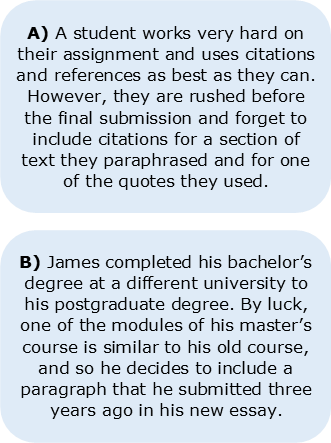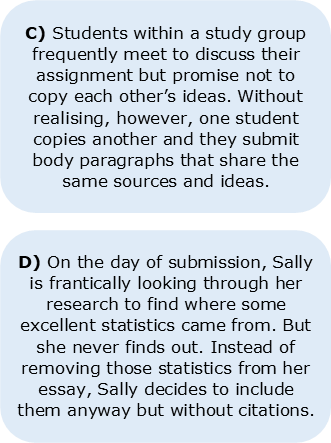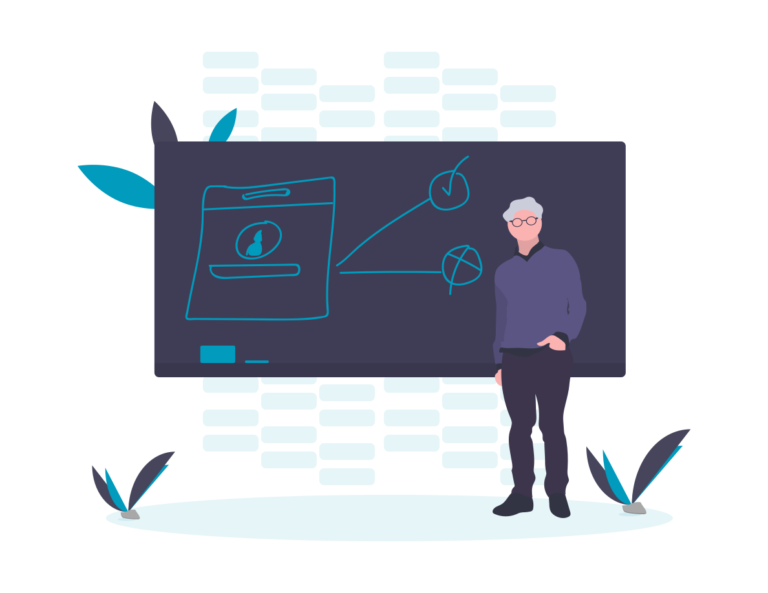Are plagiarism and academic conduct important?

This is the first of two chapters about Plagiarism Avoidance. To complete this reader, read each chapter carefully and then unlock and complete our materials to check your understanding.
– Introduce the concept of academic conduct at university
– Focus on plagiarism as a type of academic misconduct
– Discuss what would happen to a student who has committed academic misconduct through plagiarism
Before you begin reading...
-
video and audio texts
-
knowledge checks and quizzes
-
skills practices, tasks and assignments
Chapter 1
One word that you’ve probably never heard before joining university (but which your tutor might mention often) is ‘plagiarism’. This is because plagiarism avoidance is very important in academia. Plagiarism is when one author uses or copies another author’s work or research without indicating that they have done so, perhaps by neglecting to add citations or quotation marks.

Thankfully, plagiarism is easy to avoid provided you follow the advice provided in this short reader. In Chapter 1, we explore the concept of academic conduct and provide examples of plagiarism, explaining how tutors use similarity checking software to identify cheating in essays and presentations. Then, in Chapter 2, we compare accidental and purposeful plagiarism before offering seven strategies for ensuring your submissions are plagiarism free. After completing both chapters in this reader, consider unlocking, downloading and completing our Chapter worksheets to check your progress and understanding.
What is academic conduct?
Whether you’re studying or teaching at a college or university, as an academic you’ll be expected to follow a set of rules which are known collectively as ‘academic conduct’. Break those rules and you’ll be committing academic misconduct, which is a serious offense – one that can potentially see you expelled from your bachelor’s, master’s or PhD. As it will be your responsibility to find out what these rules are exactly, it may be a good idea to keep your eyes on your email account for mention of a ‘student handbook’ or other document that explains your institutional rules and regulations. Some examples of academic misconduct to watch out for are:
- mistreating staff or other students
- missing too many classes or tutorials
- paying someone to complete an assignment for you
- submitting someone else’s assignment instead of your own
- selling university materials, resources or intellectual property
- cheating in an exam or test, such as by bringing in the answers
- stealing, bullying, or any other kind of aggressive and unlawful behaviour
- resubmitting an assignment that you’ve already submitted in another course
- using the ideas or words of another author without acknowledging that author
- working with another student on an assignment that should be completed individually

What are some examples of plagiarism?
While plagiarism is indeed a type of academic misconduct, the list above clearly indicates that it’s possible to break university or college rules in a wide variety of ways – most of which do not involve source acknowledgement. Still, as the following scenarios show, there are many ways that students can use or copy another’s work without informing the reader, committing plagiarism:


Why is it so important to avoid plagiarism?
Academic writing is intended to be scientific, unbiased, rigorous and reviewable. By clearly indicating to your reader where you found your information, you’ll be offering a number of benefits to your writing and to the academic community:
- your evidence will be more convincing
- your research will be verifiable and replicable
- other researchers will be able to find the sources you used
- tutors will be able to better grade your assignment
In addition to benefitting your writing, plagiarism avoidance helps students avoid academic-misconduct procedures. If you are accused of misconduct, expect to have to write a short essay about your case, attend a meeting to discuss the situation, and communicate with the panel that decides the outcome. Depending on the severity of the collusion you’re accused of, your honesty and academic record, and the quality of the university, one or more of the following outcomes may be decided:

- a warning is placed on your permanent record
- your grade is capped at a lower percentage
- you’re awarded a zero for the assignment
- you’re asked to retake the course in its entirety
- a fine is issued to you
- you’re expelled from the university
How do tutors know that you’ve plagiarised?
What most students don’t realise when they purposefully cheat in an academic assignment is that it’s very easy for a tutor to know whether you’ve plagiarised or not. That’s because you’ll likely be asked to submit your work through a similarity checking software such as Grammarly or Turnitin. This software will check your work against a bank of existing sources, highlighting any instances of similarity and indicating which sources are similar (or identical) to your writing. To make sure that you’re never wrongly accused of academic misconduct, continue studying with Chapter 2 where we introduce seven helpful strategies for plagiarism avoidance.
Downloadables
Once you’ve completed both chapters in this short reader about Plagiarism Avoidance, you might then wish to download our Chapter Worksheets to check your progress or print for your students. These professional PDF worksheets can be easily accessed for only a few Academic Marks.
Chapter 1 explores the topic: Are plagiarism and academic conduct important? Our Chapter 1 Worksheet (containing guidance, activities and answer keys) can be accessed here at the click of a button.
Chapter 2 explores the topic: Which 7 strategies help students avoid plagiarism? Our Chapter 2 Worksheet (containing guidance, activities and answer keys) can be accessed here at the click of a button.
To save yourself 1 Marks, click on the button below to gain unlimited access to all of our Plagiarism Avoidance Chapter Worksheets. This All-in-1 Pack includes every chapter, activity and answer key related to this topic in one handy and professional PDF.
Collect Academic Marks
-
100 Marks for joining
-
25 Marks for daily e-learning
-
100-200 for feedback/testimonials
-
100-500 for referring your colleages/friends